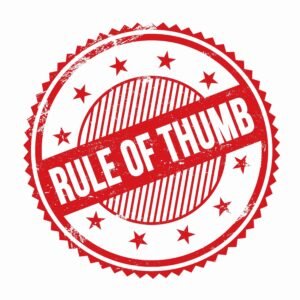Figuring out the Gender of Irish nouns – Endings and Consonants
 In a previous article I wrote how you can usually tell the difference between masculine and feminine nouns when the definite article is present. Using those three questions can help you to identify the gender of a noun in Irish. But what happens when we don’t have the definite article – the word ‘an’ – before the word?
In a previous article I wrote how you can usually tell the difference between masculine and feminine nouns when the definite article is present. Using those three questions can help you to identify the gender of a noun in Irish. But what happens when we don’t have the definite article – the word ‘an’ – before the word?
Got A Dictionary?
The best way is by consulting a dictionary – either an old-fashioned paper one, or the online equivalents (such as focloir.ie and teanglann.ie). Most will have some kind of masc. or fem. label next to each noun entry (fir. or bain. in Irish). A quick check in the dictionary and you’re good to go! [reference tools course]
“But what if I don’t have access to a dictionary right now?” I hear you say.
Hmmm… Well, first of all, I’m not sure I believe you, since nowadays basically everyone has a smartphone with constant access to the internet – but sure, okay, let’s assume you lost yours or it ran out of battery or something! Or indeed, you’re stuck in the middle of an Irish exam!
Learn these Word Endings?
There are ways to guess whether a noun is masculine or feminine based on the ending. In fact, many Irish grammar books provide long lists of “masculine” and “feminine” endings. In my experience, however, these lists are too long, complicated, and prone to exceptions to be of much use. For example, one book gives the following endings as (usually) masculine …
- -(e)adh, -(a)í, -án, -ch, -éad, -éal, -éan, -eál, -éar, -éir, -eoir/óir, -ín, -(i)úir, -s, -ún, -úr
… and the following as (usually) feminine.
- -(a)íl, -(e)áil, -(a)ilt, -(a)int, -áint, -(a)íocht, -aois/ís, -chan, -(a)irt, -(e)ach, -(e)acht, -úil, -úint, -lann, -eog/óg
Now, if you are somehow able to memorise all of those, and the many exceptions, I will be very impressed! There is, however, a much simpler rule of thumb that will help you to guess the gender correctly much (though not all) of the time.

Slender and Broad Consonants
Before I get to the aforementioned ‘rule of thumb’, however, I need to briefly explain the difference between a slender consonant and a broad consonant.
A slender consonant is any consonant with a slender vowel (e, i, é, í) before or after it.
- iris (magazine) – the consonants r and s are both slender here
- tine (fire) – the consonants t and n are both slender here
A broad consonant is any consonant with a broad vowel (a, o, u, á, ó, ú) before or after it.
- mála (bag) – the consonants m and l are both broad here
- brón (sorrow) – the consonants r and n are both broad here
You may have heard of the rule for Irish spelling, “Caol le caol, leathan le leathan.” (Slender with slender, broad with broad.). This rule states that when a consonant is between two vowels, those two vowels are usually both slender or both broad. Though there are some exceptions to this rule, you can see that it at least holds true for the four examples given above.
A Rule of Thumb for Guessing Genders in Irish
Okay, now – at last – we come to the rule of thumb for guessing the gender of a noun. Here it is:
If the last consonant is broad, the noun is most likely masculine. If the last consonant is slender, the noun is most likely feminine.
Another way of remembering this is: Liam Leathan, Ciara Caol. (Thanks to Sorcha Ní Riain on Twitter for that one!)
Kevin Scannell (Caoimhín Ó Scanaill) – the American professor of mathematics and computer science, and developer of many computational tools for the Irish language – has tested this rule of thumb in a large database and found it to be 78.6% accurate.
Pretty good, but this means that exceptions make up the remaining 21.4%. For example …
- masculine: cailín (girl), ainm (name), athair (father), dlí (law), páiste (child) …
- feminine: bean (woman), lámh (hand), cos (foot), rogha (choice), fadhb (problem) …
So, consulting a dictionary is still your best bet, if you have time to spare and want to be 100% accurate. But if you’re in a rush, 78.6% is not a bad return!
Ádh mór leis an bhfoghlaim!
In Conclusion...
 In conclusion, while the broad/slender rule of thumb offers a surprisingly reliable shortcut for guessing the gender of Irish nouns—getting it right nearly 80% of the time—it’s important to remember that Irish, like all languages, has its quirks and exceptions. Learning to recognise patterns such as “Liam Leathan, Ciara Caol” can certainly boost your confidence and intuition, especially when reading or speaking on the fly. However, when precision matters, there’s no substitute for checking a reliable dictionary. As with many aspects of Irish, developing a feel for noun gender takes time, practice, and plenty of exposure—but armed with this rule, you’re already well on your way.
In conclusion, while the broad/slender rule of thumb offers a surprisingly reliable shortcut for guessing the gender of Irish nouns—getting it right nearly 80% of the time—it’s important to remember that Irish, like all languages, has its quirks and exceptions. Learning to recognise patterns such as “Liam Leathan, Ciara Caol” can certainly boost your confidence and intuition, especially when reading or speaking on the fly. However, when precision matters, there’s no substitute for checking a reliable dictionary. As with many aspects of Irish, developing a feel for noun gender takes time, practice, and plenty of exposure—but armed with this rule, you’re already well on your way.
For more tips, see Caoimhín’s Basic Irish Grammar course, where he explains 30 Irish grammar topics in short, concise videos.
Bígí páirteach!
Join the online Irish community at LetsLearnIrish.com.
Follow on social media @LetsLearnIrish.






